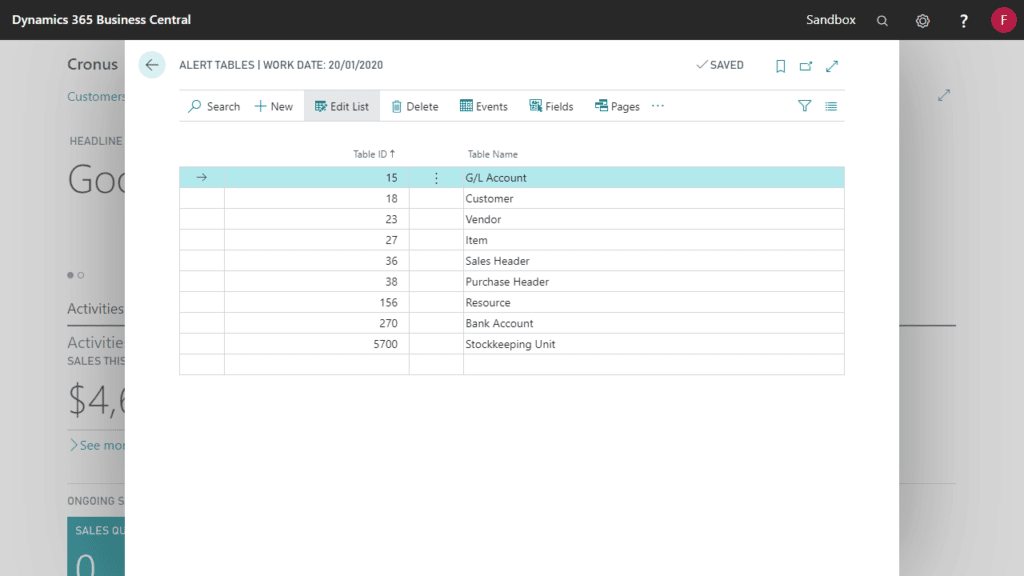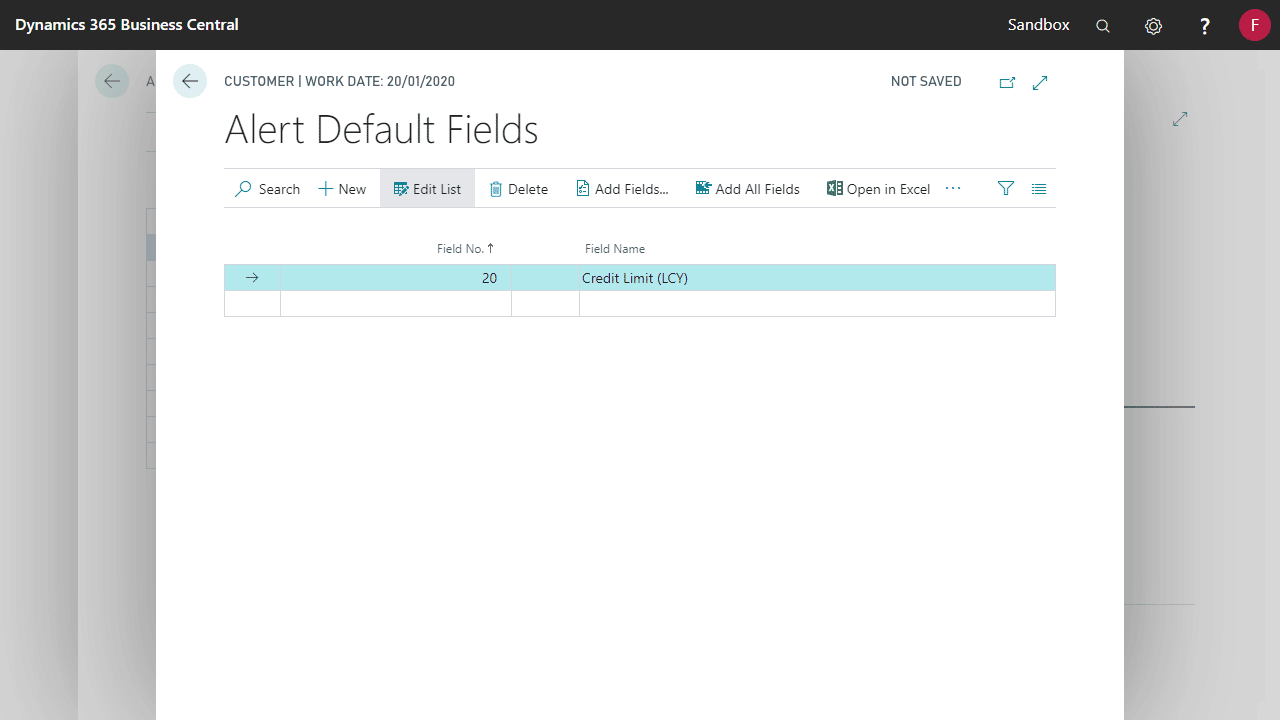Alert Tables specify which tables can be used in the Alerts module.
This makes it easier for users to create alerts by having a shorter list of tables they can select from. An administrator can add more tables if required.
Alert Tables
To modify which tables are available for use with alerts:
- Search for Alert Tables.
- Click New and select the Table ID.

Setting Fields available for a table
Default Fields can be used to monitor specific Field changes, filter Alerts when specific Fields match a given value, and will be displayed on Emails distributed from Alerts monitoring this Table.
You can use the Add Fields… action to add multiple Fields at once.


Set the page used for viewing the related record
Pages allows you to decide which Page will open to display the related record for an Alert.
Default Pages are normally assigned automatically when creating a new Alert Table. This can be changed in scenarios where there are multiple pages for a given table.
For example, Table Sales Header where both Sales Order and Sales Quote pages are valid options.


Set which fields can be used as a recipient
Recipient Fields allow you to use fields from the Table to send out Alerts and Emails.
For example for the Sales Header you can use the Sell-to Customer No. to send an Alert to the Customer when a Sales Order is raised.


Table-specific events
Events are key points within a Business Central process. Events are used when a table trigger doesn’t provide quite the right point to run an alert.
Alerts comes with a handful of Events that are created during Initialise Defaults (see Initial set up for Alerts Setup), to create your own events see the Creating custom events for triggering Alerts article.
The following Events are included:
| Table | Event | When |
|---|---|---|
| Item | ITEMPOST | An Item Ledger Entry is created |
| Stockkeeping Unit | SKUPOST | An Item Ledger Entry is created |
| Customer | CUSTPOST | A Customer Ledger Entry is created |
| Vendor | VENDPOST | A Vendor Ledger Entry is created |
| Bank | BANKPOST | A Bank Account Ledger Entry is created |
| G/L Account | GLPOST | A General Ledger Entry is created |
| Resource | RESPOST | A Resource Ledger Entry is created |




